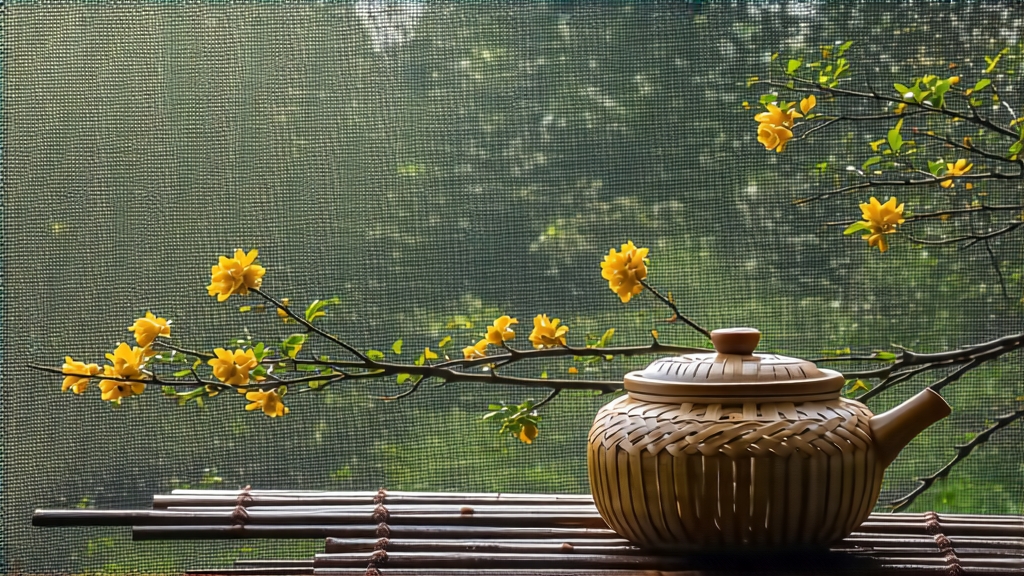
Tucked high above the Sichuan basin, where humid clouds brush the shoulders of 1,450-metre peaks, lies the tiny appellation that gave China’s most discreet tea category its first golden ambassador—Meng Ding Huang Ya. While green tea commands the limelight and pu-erh fills collectors’ vaults, yellow tea survives in a whisper, produced in batches small enough to fit in the trunk of a taxi. Of the three orthodox yellow teas still handmade today, Meng Ding Huang Ya is the only one harvested exclusively from the garden that once fed the Tang-dynasty emperor’s cup. Understanding it is therefore a window into both the chemistry of “sealed yellowing” and the poetry of mountain terroir that Chinese growers have refined for twelve centuries.
-
A leaf born of empire
The earliest mention appears in the 8th-century Classic of Tea, where Lu Yu praises “mengding as the first spring bud under heaven.” By the Song dynasty the tea had become gong cha—tribute tea—carried 2,000 km by fast horse to Kaifeng, then by barge along the Grand Canal. An edict of 1068 CE specifies that only buds picked before the Qingming festival could bear the Meng Ding seal, a tradition that still governs plucking dates. When the yellowing technique emerged during Ming (records place it between 1554 and 1570), Meng Ding’s micro-climate—morning mist, afternoon sun, 85 % humidity—proved ideal for the slow oxidation that turns the leaf jade-yellow without scorching it. The style almost vanished during the 1930s civil war; only five families in Shangqing village kept the know-how alive, passing it from mother to daughter under the promise “never sell the bamboo basket.” Today 180 hectares are cultivated, but genuine Huang Ya remains rarer than silver-needle white tea. -
Varietal and terroir
All authentic Meng Ding Huang Ya comes from a single seed-propagated population called “chuancha #9,” a small-leaf Camellia sinensis var. sinensis selected for its low tannin and high theanine. The bushes grow on narrow terraces of yellow-brown phyllite soil so thin that roots must fracture rock to find nutrients, concentrating aromatic precursors. Because the mountain blocks the Sichuan fog until 10 a.m., buds stay turgid and amino-rich; when the sun finally breaks, UV-B spikes trigger a brief burst of terpene synthesis, giving the tea its signature magnolia note. No agro-chemicals are permitted inside the heritage zone; instead, growers plant soybean between rows to fix nitrogen, then plough the plants under as green manure. -
The craft of “men huang” (sealed yellowing)
Yellow tea’s identity rests on one extra, nerve-wracking step inserted after kill-green and before rolling. The moment the leaf exits the 160 °C drum—still 55 % wet and dangerously hot—it is piled in heaps of exactly 1.2 kg and wrapped in steamed cotton cloth. Every twenty minutes the master loosens the bundle, allowing trapped heat and humidity to nudge polyphenol oxidase back to life. Over 4–6 hours the leaf slowly suffocates, turning from jade to maize while forming a unique class of flavonol glycosides that soften astringency. If the pile overheats by even 3 °C the batch collapses into green tea; if it cools, fermentation stalls and red spots appear. When the leaf finally smells of fresh corn milk, the craftsman hand-rolls it along a bamboo screen for eight minutes to set the crease, then charcoal-dries at 55 °C for ninety minutes. The entire process must finish before dusk; night air carries yeasts that would hijack the flavour. One kilo of finished tea demands 52,000 buds, all picked within the 13-day pre-Qingming window. -
Leaf appearance and aroma lexicon
Dry leaves resemble tiny golden fishhooks, each 15–20 mm long, downy at the stem end and tipped with a faint ochre band left by yellowing. A gentle shake releases layered perfume: steamed pumpkin, freesia, and a cooling camphor echo reminiscent of Sichuan pepper leaves. After the first infusion the buds stand upright in the glass like miniature bamboo shoots, a phenomenon locals call “the forest waking up.” -
Brewing: precision without panic
Water: spring